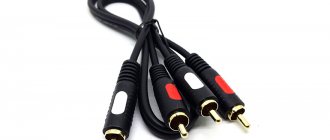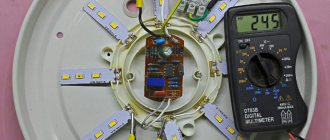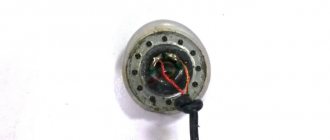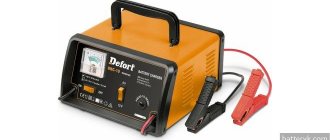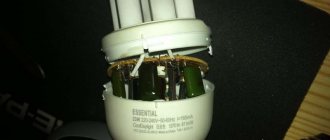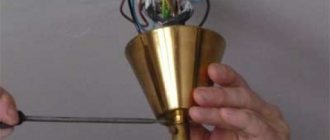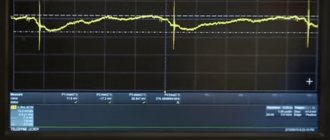Quite often, a break in the wire leading to the plug occurs on the headset - according to experts, this is the most common defect that occurs due to frequent kinks and various mechanical damage.
Inside the cable there are several very thin and delicate wires that can easily break from strong tension or jerking. Is it possible to repair a headphone plug on your own, and what is needed for this?
Preparing for work
To repair headphones yourself, we will need:
- non-conductive glue or epoxy resin;
- a special heat-shrinkable tube is an alternative to electrical tape;
- old fountain pen;
- tester (multimeter);
- soldering iron with a thin tip and all accompanying components (tin, rosin);
- side cutters;
- mounting knife;
- lighter.
It's better to use fabric glue if you can't find epoxy resin, which only needs a few drops.
Repair algorithm
You can repair a lot of things yourself - the main thing here is the desire and ability to work with various tools. Let's look at the whole process step by step.
- Using side cutters, we bite off the plug, stepping back from it by 2-3 cm.
- We take out the headphone plug and a piece of old wire from the sealed connector - to do this, we simply cut the shell along the seam with a sharp mounting knife.
Now we can see where the wires are soldered to the plug - we take a photo for memory, so as not to confuse anything later. However, there is a standard wiring of wires coming from the headphones: copper (yellow) color - common, green - left earphone, red - right.
- We remove the cut wire leading to the headphones from the varnish coating, clean and tin the ends of the wire, and connect the grounding of each channel together.
We check the plug for a short circuit, having first removed any remaining tin. The channel layout is shown in the photo:
- We take the old handle, disassemble it and use only the tip - we will use it to make a new housing for the plug we disassembled.
- Using side cutters of the required length, we cut off a heat-shrinkable tube, which, instead of electrical tape, will protect the wires from sharp bending at the very exit of the new plug.
- We put the future housing on the wire, then the tube, and proceed to the final installation. How to solder wires so as not to mess anything up? There is a photograph taken earlier for this.
- Before packing everything into a tube with heat shrink, we do a check - put on headphones, use the multimeter probes to touch the contacts of different channels one by one, and you should hear rustling or clicking noises. You can try plugging the unfinished structure into the phone jack and turning on the radio. If you connect to an MP3 player to listen to music, you can use the balance to check how each channel works.
- If the test result is positive, we put a tube over the soldering area and, using an open flame of a lighter, “squeeze” it so that it firmly covers the open part of the plug, as shown in the photo.
- We dilute a few drops of epoxy, apply it to the tube, put on the body, and set everything aside for several hours for the components to completely polymerize.
That's the whole process of how to fix headphones from a mobile phone or laptop headset.
How to repair a headphone plug yourself
To repair a headphone or headset plug with your own hands, you need to carefully remove it from the case if it has not yet fallen out. Usually the plug is filled with rubber. When disassembling, we cut this body along the seam with a sharp knife. The neater the cut, the easier it is to restore the body after repair.
Finding out the cause of the headphones malfunction
The malfunction of headphones most often consists of a break in one of the wires in the plug. Less often, a break occurs near the speaker contacts or the wire breaks due to a violation of the integrity of the insulation.
To determine the malfunction, you need to use a multimeter and ring the plug contacts. From the diagrams above we already know where the common wire and the left and right audio channels are. If the resistance between the contact of one channel and the common wire is more than 20 - 120 Ohms, then most likely there is a break or break in the wire. Remember that the typical winding resistance of modern in-ear headphones is 32 ohms.
The breaking of the wire is determined by the jumping readings of the multimeter when the wire is bent.
The easiest place to find a break is near the headphone speakers. It is often easier to open the speaker housing than to cut the rubber-filled plug. If the wires to the speakers are soldered well, then you should remember about faults in the plug.
Do-it-yourself troubleshooting
Once you have determined the location of the malfunction, you need to get to it and see with your eyes. Then it will become clear how exactly to solder the plug or headphones.
Let's say that a wire break occurs inside the headphone plug. To disassemble the packaged minijack shown above. Ideally, you should record or photograph the wiring and update the connector soldering. Remember that flexible stranded wires are coated with a good varnish and it is difficult to tin them just like that. First you need to burn the varnish, for example with a soldering iron, lighter or mini-burner. After this, you can tin the wires with rosin or other flux.
It is better to leave 2 - 3 mm of bare wire without braiding to increase the strength of the structure. When we return the plug housing to its place or fill a new housing with sealant, it is necessary to create as large a contact area as possible between the braid and the outer sleeve of the plug. Thus, during jerks, the load will be transferred to the most massive part of the plug, and not to the weak contacts of the left and right channels.
After soldering the headphone plug, its internal contacts can be filled with hot melt glue, epoxy glue or sealant. After drying, file to the desired shape.
Wiring diagrams for wires with more than two cores
Users often wonder whether it is possible to repair headphones of a more complex design when there are more wires inside? A different number of wires may be suitable for one plug - this depends on the class of headphones:
- mono - 2 wires, it’s difficult to confuse anything here;
- stereo and mono - three wiring and different connection diagrams;
- stereo headsets - 4 pcs.;
- headsets or headphones with microphone - 5-6 pcs.
Now we will tell you in more detail about each class, except the first.
Three cores
Each earphone must have two wires in the same braid or in different ones - this is a plus and a minus. Sometimes at the end, when connecting to a plug, designers combine the negative ones into one harness and get 3 pieces at the output. To make it clear to all users, we provide a detailed wiring diagram for the plug, where you can see exactly where the wires need to be soldered according to their color design.
There is no strict standard for coating with colored varnish. For example, the left channel wires can be blue, white or green.
Four wires
There are two different options here.
- Ordinary headphones without a microphone and control buttons. 4 wires are connected to the plug: a minus from each copper-colored speaker and a plus (blue with red or green with red). For convenience, the negatives are twisted into one bundle and the result is three wires that need to be soldered to their specific places.
- Headset with microphone. Here the plug has 4 types of contacts: one from each speaker, one for the microphone, and there is room left for soldering a common wire or ground. Schematically, such soldering looks like this:
Important! At first glance, the microphone wire looks like one wire, but in fact there are two of them: a very thin wire in a PVC sheath is wrapped on top with a copper wire with colorless enamel for protection.
5 cores or more
Different types of headsets of the latest class may have from 5 to 10 separate veins, so it will be much more difficult to navigate. The signal wire from the microphone is always braided in one color, and the rest come in all sorts of shades. No specialist can tell you exactly which wire should be soldered where. How to replace the wire from the plug on the headphones in this case? The only method that works here is this: we check each vein with a multimeter to determine whether it goes to the left or right speaker, then we find the common ones and combine them into one flagellum.
You need to solder it to the plug according to the diagrams that we showed, or find a separate diagram on the Internet that is suitable for your case.
Repair your headset or headphones for your mobile phone using this method and save money from your home budget.
How to repair a headphone plug yourself
To repair a headphone or headset plug with your own hands, you need to carefully remove it from the case if it has not yet fallen out. Usually the plug is filled with rubber. When disassembling, we cut this body along the seam with a sharp knife. The neater the cut, the easier it is to restore the body after repair.
Finding out the cause of the headphones malfunction
The malfunction of headphones most often consists of a break in one of the wires in the plug. Less often, a break occurs near the speaker contacts or the wire breaks due to a violation of the integrity of the insulation.
To determine the malfunction, you need to use a multimeter and ring the plug contacts. From the diagrams above we already know where the common wire and the left and right audio channels are. If the resistance between the contact of one channel and the common wire is more than 20 - 120 Ohms, then most likely there is a break or break in the wire. Remember that the typical winding resistance of modern in-ear headphones is 32 ohms.
The breaking of the wire is determined by the jumping readings of the multimeter when the wire is bent.
The easiest place to find a break is near the headphone speakers. It is often easier to open the speaker housing than to cut the rubber-filled plug. If the wires to the speakers are soldered well, then you should remember about faults in the plug.
Do-it-yourself troubleshooting
Once you have determined the location of the malfunction, you need to get to it and see with your eyes. Then it will become clear how exactly to solder the plug or headphones.
Let's say that a wire break occurs inside the headphone plug. To disassemble the packaged minijack shown above. Ideally, you should record or photograph the wiring and update the connector soldering. Remember that flexible stranded wires are coated with a good varnish and it is difficult to tin them just like that. First you need to burn the varnish, for example with a soldering iron, lighter or mini-burner. After this, you can tin the wires with rosin or other flux.
It is better to leave 2 - 3 mm of bare wire without braiding to increase the strength of the structure. When we return the plug housing to its place or fill a new housing with sealant, it is necessary to create as large a contact area as possible between the braid and the outer sleeve of the plug. Thus, during jerks, the load will be transferred to the most massive part of the plug, and not to the weak contacts of the left and right channels.
After soldering the headphone plug, its internal contacts can be filled with hot melt glue, epoxy glue or sealant. After drying, file to the desired shape.
